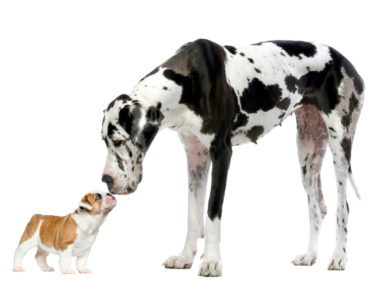
Pet Owners Outnumber Those Without Pets
At Keeping It Pawsome, we fit in with the 24% of all Americans who own cats, the 32 million people who have more than one cat, and the 64% of cat owners who have no children.
More than half of America has a pet, from the 54% of households that include a pet as part of the mix to 57% of all adults in general. In numbers, that’s 67 million households and 140 million adults. Are you one of them?
According to the report, “Pet Population and Ownership Trends,” from Packaged Facts (last updated May 2020), people with pets are increasingly older and more affluent.
During the 10-year period from 2008 to 2018, the 55- to 74-year-old age group was the only age demographic so see an increase in pet ownership rates, particularly when it comes to having a dog or a cat.
In the same time span, the affluence of pet owners increased as well. The number of dog owners with a household income of $250,000 or more jumped from 3.6 million to 8.1 million.
Even more impressive, households with an income of $150,000 or more were responsible for 64% of the growth in dog owners. The percent of cat owners in the same income bracket grew from 14% to 20% during this period.
Additionally, fewer families with children have pets than they did 10 years ago. In 2008, the share of pet owners without children was about 58%; by 2018 that had grown to 62%.
And, as always, dogs outnumber cats; and dogs and cats combined, outnumber all other pets.
But the growth in pet ownership is slowing.
From 2008 to 2013 the number of households owning a pet increased by 6.4%. From 2013 to 2018, the growth was only 2.6%. (We’d be curious to know if the growth rate got a bump during the last few months as many people who have never owned a pet finally gave in and adopted or fostered an animal during the coronavirus quarantine.)
Want to know where you fit into the mix? (Here at Keeping It Pawsome, we fit in with the 24% of all Americans who own cats, the 32 million people who have more than one cat, and the 64% of cat owners who have no children.)
Here are a few pet owner statistics to compare yourself against.

Dog Ownership Statistics
- There are roughly 82 million pet dogs in the United States, accounting for about 39% of all pets;
- 43% of American adults own at least one dog (about 104 million adults), with nearly one in five owning two or more dogs;
- 57% of dog owners are married, while 61% live in a household without children under 18;
- 23% of dog owners have a household income of $150,000 or more
- Almost 50% of adults under the age of 55 own a dog; 38% of 55-to-74-year-olds have a dog; and 22% of adults over 75 have a dog.
If you’re giving your dog chew toys, here are a few facts about chew toy safety you might want to know.

Cat Ownership Statistics
- There are 62 million cats in the U.S, accounting for about one-quarter of all pets;
- 24% of American adults own at least one cat (about 59 million adults), with the majority (54%) having two or more cats;
- Boomers are the only age group to have more cats now than 10 years ago, growing by about 25% between 2008 and 2018;
- 20% of cat owners have a household income of $150,000 or more;
- 46% of cat owners are unmarried and 64% live in a household without children under 18;
- 88% of cat owners living in suburban areas have spayed or neutered their cats; only 80% of owners living in rural areas have done the same and even fewer (77%) urban-dwelling cat owners have spayed or neutered their kitties;
- More women than men own cats (54% vs 46%).
Does your kitty love catnip? Found out more about catnip, including how often your should be dosing your cat.
Other Pets
- About 23% of all pet owners have something other than a dog or a cat
- Fish and birds are the largest segment of “other” pets: 6.6 million households have a fish and 3.7 million have a bird;
- Between 2008 and 2018 the number of households with hamsters and fish fell (-33% and -27% respectively), but the number of households with reptiles grew by 77%.

Fish Ownership Statistics
- 58% of pet fish owners live in a household with children under 18;
- 20% of fish owners are Baby Boomers;
- Fish owners are 25% more likely to have a household income of $150,000 or more, with 8% of households with an income of $150,000 or more having fish.

Bird Ownership Statistics
- Bird owners are 20% more likely than adults on average to live in one of the larger cities in the U.S, but are also more likely to live in the Pacific and Southwest regions of the country;
- Households with children under 18 account for 51% of all bird owners;
- 41% of bird owners are Gen Z or Millennial (18 to 39 years old)

Reptile Ownership Statistics
- 3.1 million households have a reptile;
- 54% of reptile owners are under the age of 40, while 14% are Baby Boomers;
- 29% of all reptile owners have a household income of $150,000 or more; 21% have a household income of $50,000 or less.

Small Animal Ownership Statistics
- 1.3 million households have at least one rabbit;
- 772,000 households have at least one hamster;
- 64% of hamster and rabbit owners live in a household with children under 18.
Own a bunny? Check out the surprising foods you should never feed a rabbit!





